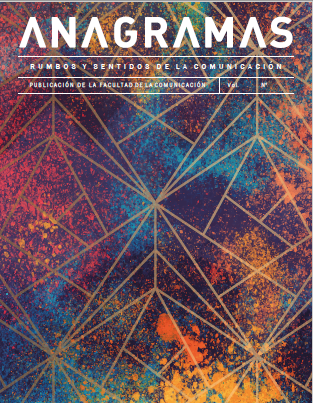Study on the existence of a Second State in the demarcations near the metro and avenida Río de los Remedios
Main Article Content
Abstract
The areas near the subway station Río de los Remedios Avenue includes a group of 27 neighborhoods belonging to the municipalities of Ecatepec de Morelos, Nezahualcóyotl and Gustavo A. Madero. In this area, the presence of a second social actor with the capacity to take control of the community can be observed. The main objective of the research was to show the existence and control of the Second State in the aforementioned demarcation, through the analysis of the violence in the area and the performance in the face of crime that the inhabitants have developed. To this end, research was conducted with a mixed approach. Three data collection techniques were used: interview, survey and digital ethnography. All of them were carried out by digital means. Through the information gathered, it could be seen that in the area under study there is a Second State that has generated the creation of a performance in the face of crime, with which the inhabitants adapt their behaviors to avoid being victims of violence. The presence of the Second State has become so commonplace that multiple actions that were originally violent have been normalized and, under certain circumstances, are considered positive. It was noted that the power of the Second Estate cannot be conceived of as being against government authorities, but rather, to a large extent, in articulation with them.
Article Details
References
Agamben, G. (2005). Estado de excepción. Homo Sacer, II, I. Adriana Hidalgo.
Comisión Nacional del Agua (Conagua). (s.f.). El Río de los Remedios: Una visión ambiental. https://agua.org.mx/wp-content/uploads/filespdf/doc_pdf_6738.pdf
González, A., Hernández, L., Perló, M. y Zamora, I. (2010). Rescate de ríos urbanos: propuestas conceptuales y metodológicas para la restauración y rehabilitación de ríos. Universidad Nacional Autónoma de México.
Instituto Nacional de Estadística y Geografía (Inegi). (2019). Encuesta Nacional De Seguridad Pública Urbana (septiembre 2019). https://www.inegi.org.mx/contenidos/saladeprensa/boletines/2019/ensu/ensu2019_10.pdf
Kelsen, H. (1992). Compendio de teoría general del Estado. Colofón.
LeBreton, D. (2002). Antropología del cuerpo y modernidad. Ediciones Nueva Visión.
Lechner, N. (1977). La crisis del Estado en América Latina. Revista Mexicana de Sociología, 39(2), 389-426. https://doi.org/10.2307/3539771
Lechner, N. (1994). Los nuevos perfiles de la política. Un bosquejo. Nueva Sociedad, (130), 263-279.
Philip, A., Akhil, G. y Timothy, M. (2015). Antropología del Estado. Fondo de Cultura Económica.
Rivera, A. (2019, 13 de abril). Realizan jornada de limpieza en el Río de los Remedios. Milenio. https://www.milenio.com/politica/gobierno/realizan-jornada-de-limpieza-en-el-rio-de-losremedios
Salinas, L. A. (2017). Gestión metropolitana en la Zona Metropolitana del Valle de México: entre
la legalidad y la voluntad política. Papeles de Población, 23(91), 143-169. http://www.scielo.org.mx/scielo.php?script=sci_arttext&pid=S1405-74252017000100143
Secretaría de Desarrollo Social. (2012). Programa de Ordenación de la Zona Metropolitana del Valle de México. http://imduyv.gob.mx/TRANSPARENCIA/ARTICULO_70/Programa%20ZMVM.pdf
Secretariado Ejecutivo del Sistema Nacional de Seguridad Pública. (2022). Incidencia delictiva del Fuero Común, nueva metodología. https://www.gob.mx/sesnsp/acciones-y-programas/incidencia-delictiva-del-fuero-comun-nueva-metodologia?state=published
Segato, R. (2006). La escritura en el cuerpo de las mujeres asesinadas en Ciudad Juárez Territorio, soberanía y crímenes de segundo Estado. Tinta Limón.
Segato, R. (2014). Las nuevas formas de la guerra y el cuerpo de las mujeres. Revista Sociedade e Estado, 29(2), 341-371. https://doi.org/10.1590/S0102-69922014000200003
Segato, R. (2016). La guerra contra las mujeres. Traficantes de sueños.
Suaza, E. J. y Martínez, W. (2016). Tipologías y patologías de Estado. Otra lectura frente a la formación y prácticas de lo estatal. Estudios Políticos, (48), 52-72. https://doi.org/10.17533/udea.espo.n48a04
Weber, M. (2009). La política como vocación. Alianza Editorial.
Zaffaroni, R. (2009). Globalización y crimen organizado. En M. Suárez Escobar (coord.), Voces para la libertad. Reflexiones sobre la represión (pp. 261-286). Eón.





